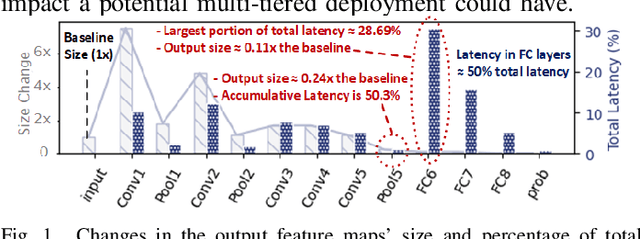LENS: Layer Distribution Enabled Neural Architecture Search in Edge-Cloud Hierarchies
Paper and Code
Jul 20, 2021



Edge-Cloud hierarchical systems employing intelligence through Deep Neural Networks (DNNs) endure the dilemma of workload distribution within them. Previous solutions proposed to distribute workloads at runtime according to the state of the surroundings, like the wireless conditions. However, such conditions are usually overlooked at design time. This paper addresses this issue for DNN architectural design by presenting a novel methodology, LENS, which administers multi-objective Neural Architecture Search (NAS) for two-tiered systems, where the performance objectives are refashioned to consider the wireless communication parameters. From our experimental search space, we demonstrate that LENS improves upon the traditional solution's Pareto set by 76.47% and 75% with respect to the energy and latency metrics, respectively.
 Add to Chrome
Add to Chrome Add to Firefox
Add to Firefox Add to Edge
Add to Edge